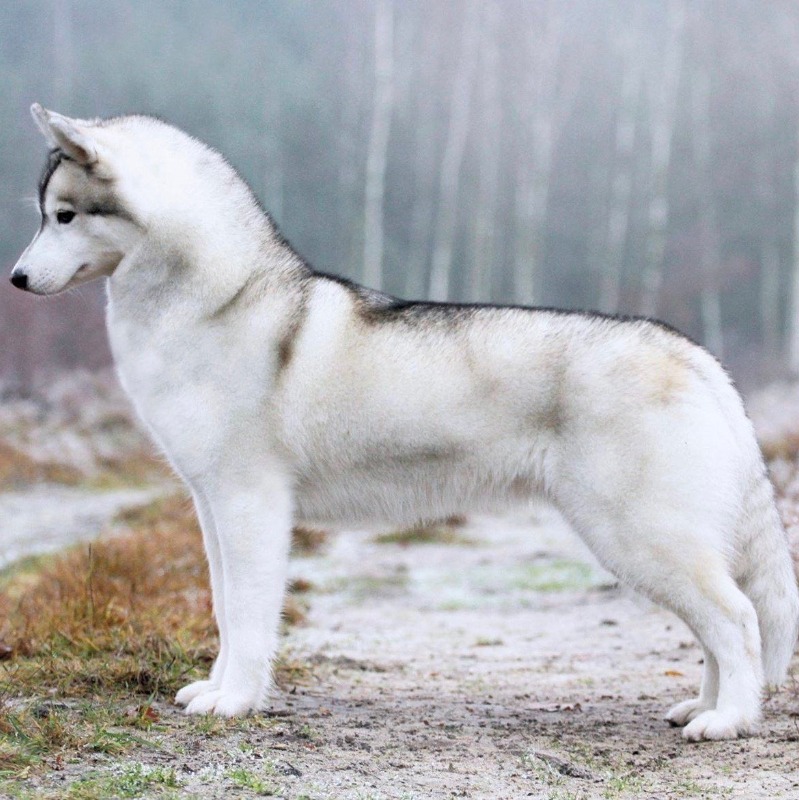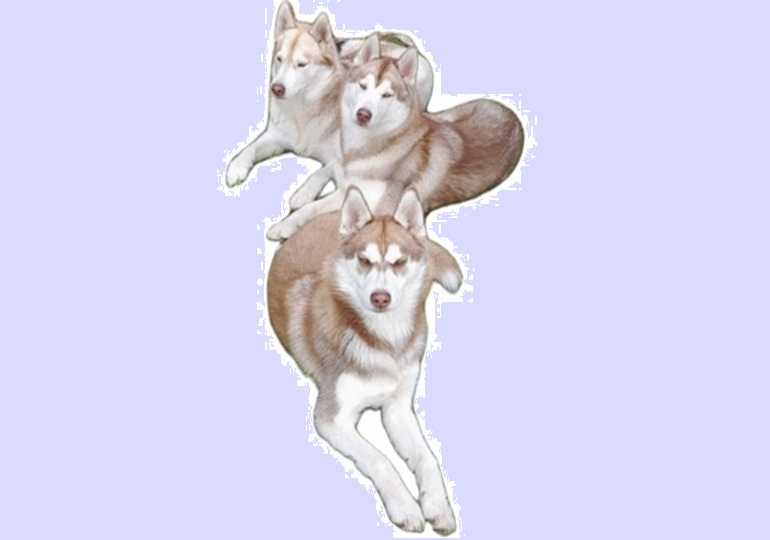Breeds
Siberian Husky

GROUP 6 - UTILITY
Brief History
The Siberian Husky’s compact body, well-furred coat, erect ears, and brush tail immediately suggest the breed’s northern heritage. The breed’s ancestors were originally bred in north eastern Asia by the Chukchi people and were kept as companion dogs for their families, as well as endurance sled dogs. Siberians caught the eye of the public when they began winning sled races in the early 1900s, but they made headlines in 1925 when a legendary musher, Leonhard Seppala, led a relay of Siberian Huskies over 658 miles in only five and a half days to rush a lifesaving serum to Nome, Alaska, where an epidemic of diphtheria had broken out.
Average Life Span
When considering a dog, please realise that you are taking it on for its lifetime.
The average life span is 12 to 15 years.
Temperament
They are intelligent but somewhat independent and stubborn. They thrive on human company, but need firm, gentle training right from puppy hood. These are dogs bred to run.
General Breed Description
The Siberian Husky is a medium-sized working dog, quick and light on his feet and free and graceful in action. His moderately compact and well-furred body, erect ears and brush tail suggest his Northern heritage. His natural hunting instinct is always there and given the opportunity he will be off and may not heed your efforts to call him back. They do not tend to bark as a rule, but they do howl. Siberian Huskies come in all colours from black to pure white.
Coat and Care Requirements
The coat of the Siberian Husky is double and medium in length, giving a well-furred appearance. The undercoat is soft and dense and of sufficient length to support the outer coat. The guard hairs of the outer coat are straight and somewhat smooth lying. It should be noted that the absence of the undercoat during the shedding season is normal. The occasional bath is enough to keep them clean. Siberian Huskies do shed coat, usually twice a year and it can take up to a month for the coat to shed. Regular grooming through this stage is essential.
Size
Height: Males: 53.5 to 60cms (21 to 23.5ins), Females 51 to 56cms (20 to 22ins).
Weight: Males 20 to 27kgs (45 to 60lbs), Females 16 to 23kgs (35 to 50lbs).
Health
All breeds have individual health issues. When speaking to breeders in is recommended you enquire about breed’s health and what health testing the breeder does. The Siberian Husky is generally a healthy breed, however health conditions do occur occasionally. These may include Hip Dysplasia (HD) and inherited eye conditions.
Suitability
Huskies are an ideal pet for an active family. They need plenty of exercise and they are also escape artists, so it is recommended that they be kept in a secure yard with high fences. They do enjoy the company of other dogs, once acquainted. If left home alone for long periods they will become bored and start to destroy things because, like a lot of other working dogs, they like to keep busy.
In Conclusion
Now you know a little more about this breed. If you have decided this is the dog for you and wish to investigate further, please contact the Breed Club or Dogs Victoria. They will be able to give you information about available puppies and also suggest dog events where you can see the breed and speak to breeders. In this way you will gain a better perspective of the breed and its needs. With any breed of dog, it is important to research and determine suitability for your lifestyle before committing to a puppy which will be a part of your family for many years to come.
Whilst many breeds are recommended for families, it is imperative that when children are with dogs they are supervised at all times. Basic obedience training is a vital part of dog ownership.
Dogs Victoria is about the responsible ownership of all dogs and in particular the preservation of pure breeds.
Link to Dogs Australia Breed Standard: https://dogsaustralia.org.au/breed/detail/191
Breeders





